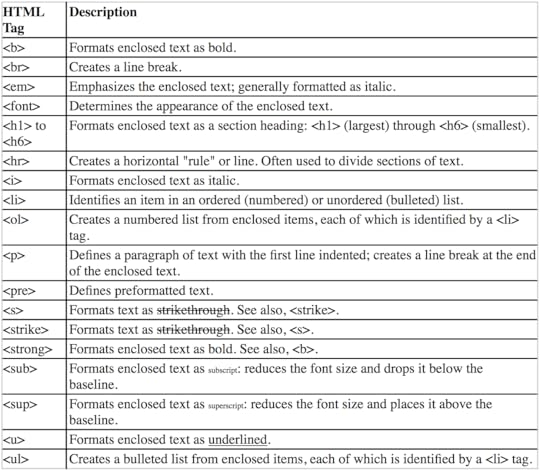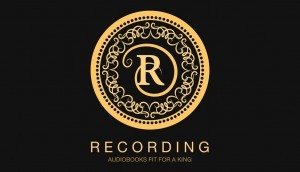Bryan Heathman's Blog, page 5
May 9, 2016
It’s a Bird…It’s a Plane…It’s an Author! – 5 Tips to Getting National Media Attention

If you’re an author or a Fortune 500 executive, you’ve got your work cut out for you in terms of besting the competition. The requirements to run a successful marketing campaign are fairly specific, and you’ve got to have an edge, or what I call a super power. Many speakers I work with have a super power to success. When you find your super power, it’s like stomping down the pedal of a 12-cylinder twin turbo Mercedes.
It’s a bit like the difference between playing a friendly game of tennis at the public courts of Coronado Island near San Diego, and playing at the $88M world class tennis stadium in Indian Wells built by Oracle CEO Larry Ellison.
There’s nothing wrong with the tennis courts at Coronado – they’re wonderful. In fact, there’s nothing like swinging a racket beneath the shade of an emperor palm harborside, watching yachts bob up and down as you serve, and heading to the Coronado Beach Resort around the corner to cool down with a cold beverage after your match.

In fact, on a sunny Tuesday morning in February – as I recently found out – there’s little competition for a tennis court on Coronado Island, near San Diego. Just drive up, park curbside, and swing away in the fresh morning air. While the rest of the world is jockeying for position to order a latte at the espresso bar, there’s little to compare with the feeling of breezing over the bridge to Coronado for a match before lunch.
But this is a very different scene from the Indian Wells Tennis Gardens in Palm Springs. While I can’t boast of having the skill to play tennis at that desert mecca, I can say I had the pleasure of rubbing elbows with travelers from all over the world to watch international tennis stars up-close and personal. In fact I sat fifteen feet away from Roger Federer, one of the top athletes in the world.
Competition for seats was keen. Competition to be on the court was all but insurmountable. Those rare tennis players who make it to this level have an edge. They have found a super power to success, like hitting a rocket-like forehand down the line for a winner while running at a full sprint.
Just Like Superman
If you are releasing any product, from a book release to an incredibly cool mobile app, a super power is a skill you must hone to amplify your message in an incredibly competitive space. The moment you publish your work and begin to promote it, you are competing with big international money for the same spotlight.
I used to work in Sales & Marketing roles at some of the world’s largest companies whose Brands were in the top 10 most valuable Brands in the world. After a few decades of this work, I decided to step out on my own and start a dot.com in the Roaring 90’s. At our prime, we were growing exponentially when we were suddenly offered a buyout by a big publically traded company New York. At the time, our marketing approach was working exclusively with a highly select clientele, and it allowed us to compete with much larger, less nimble opponents.
I remember one day leaning against the company water cooler in the company headquarters in Manhattan on 29th & Broadway, complaining about the incredible competition we faced. The question was how to compete on a national landscape with a measly $2 million launch budget when my big brand competitors were spending $100 million per year. I felt like Jack who climbed the magic beanstalk, only to find he had to slay a giant before he could go home to his wife and kids at 6:00.
Now as a publisher, I work with authors who are typically working with a marketing budget far less than $2 million for their book release. For keynote speakers (who are typically also authors), the story is the same. It’s also true for executives who want to distinguish themselves by creating a personal brand as an expert. Competing in a global landscape for consumers’ attention is increasingly a task for the ambitious.
So how does an author amplify their message on a national or international stage without a 7-digit marketing budget?
The book industry is likely one of the most competitive industries on the planet. In non-fiction, there are 300,000 new releases annually in the US. Large superstores only stock 75,000 total titles each season, with a fraction of their shelf space dedicated to non-fiction book titles.
With statistics like these, getting the word out and rising above the competition can seem nearly impossible. But, from a marketing perspective, authors have a hidden super power. Very few authors take full advantage of this lack of parity, and that means it can amount to a back door to success for those who choose to hone their marketing prowess.
Winning the Big Match
Big media companies love to interview authors. If you are Lexus or Disney, you typically need to buy massive exposure from media companies to get the message out. Insightful authors can often obtain massive media exposure for pennies on the dollar, simply because of their status as thought leader.
The trick to leveling the competitive playing field is to build your marketing tool belt. Here are 5 tips to create your super power:
Tip 1: Create an inventory of content to post on your blog and social media accounts. Take note of the unique guidelines required for writing copy appropriate for LinkedIn (short articles), Facebook (25-50 words with a meme or video), and Twitter (144 characters with strategic use of hash tags). Get in motion, and stay in motion, consistently pushing your message forward.
Tip 2: Write a series of articles on your area of expertise that can be posted to article directories, submitted to magazines, and posted to LinkedIn as well. Make sure your content includes your best keyword research, and incorporate these keywords in everything you post.
Tip 3: Social media posts and articles must always include images, so start collecting licensed images that are compelling and relate to your material. Try getting 10-20 images that are a good fit by doing keyword research on your area of expertise, whether it be making an awesome pie crust or agile software development.
Tip 4: Work with a publisher who has a sales team calling on bookstores. To maneuver around your competition, getting your book into bookstores requires sales calls on both chain buyers and people who coordinate bookstore signing events. Hundreds of thousands of new books are released each year, and a publisher’s track record on producing winners makes a huge difference in getting retail shelf space on a national level. With ebook sales on the decline (12% decrease in the US in 2015) and new indie bookstores opening at a rapid clip (300 new bookstores in 2015), getting physical bookstore distribution is essential in today’s climate for books.
Tip 5: Leverage your super power as an author and get media appearances. This is the magic ingredient in penetrating national consciousness with your book. If you are able to breakthrough in 3 markets in the US, your chances of success increase exponentially.
The question is, are you happy with the results you’ve achieved so far? Or are you ready to slip through the back door to success by leveraging your super power as an author? The competition is keen, but the choice is yours. And the rewards are rich indeed!
 Bryan Heathman is the President of Made for Success Publishing. Bryan works with best-selling authors in the role of publisher and marketer, including the late Zig Ziglar, Chris Widener and John C. Maxwell. Bryan is the author of Conversion Marketing, a marketing book that condenses knowledge on website conversion from 7-years running an online ad agency. Bryan’s Fortune 500 experience includes running high impact marketing campaigns for Microsoft, Eastman Kodak and Xerox.
Bryan Heathman is the President of Made for Success Publishing. Bryan works with best-selling authors in the role of publisher and marketer, including the late Zig Ziglar, Chris Widener and John C. Maxwell. Bryan is the author of Conversion Marketing, a marketing book that condenses knowledge on website conversion from 7-years running an online ad agency. Bryan’s Fortune 500 experience includes running high impact marketing campaigns for Microsoft, Eastman Kodak and Xerox.
April 26, 2016
Deal Making – Fortune Favors the Ready

There is no such thing as luck. The “luckiest” people I know create their own luck. This is especially true in the art, like music and writing. As a book publisher, the best authors, speakers and executives I associate with are skilled in creating opportunities for themselves.
If business is built on relationships, then those relationships have to be handled with care from the start. Even in the early days of my career in corporate sales, I learned that deals are like dates: you can’t simply blurt out a proposal. It takes time and finesse.
Take for example an experience I had recently while on a ski trip to Utah. I watched as a daring young film producer scooped up opportunity like so much ice cream after a fine dinner. His bravado was all but shocking, yet it paid off for him.
I was invited by a filmmaker friend of mine to go on a ski trip this winter. He owns a residence at a beautiful mountaintop resort in Utah, and I hungrily agreed to go. He’d told me about it many times. I was looking forward to spending a week among the powder and aspens, getting some time away from my life of book publishing and deal making. You know, hitting the reset button with the feel of cold air on your face.
In spite of my eagerness to hit the slopes, the timing for the trip was less than ideal – I arrived during the middle of the Sundance Film Festival, the annual showcase where indie filmmakers get International exposure for their work. The town was overrun with 46,000 critics, celebrities and film producers.
If you’re like me, you enjoy film as much as the next person. But this trip was all about the epic Utah powder, not competition for space on the chair lifts or at the restaurants in Park City. I saw the festival as an obstacle, not a perk. Still, I suppose if you have to put up with inconvenience, it might as well be an incredibly glamorous inconvenience.
A car picked me up at the airport in style – a glossy black Escalade transported me to the ski lodge. As soon as I arrived, my skis were whisked away by an invisible staff member. I didn’t see my gear again until the next morning, when I found them waxed and ready at the base of the chair lift. It was truly a first class touch.
Later that day my friend gave me a tour of the slopes, where we skied through mountaintop neighborhoods with new construction that included private ski lodges worthy of an Austrian barony.
After skiing a bit too fast on the slopes (don’t tell anyone, but we actually got chewed-out in the lift line by a local for racing) we headed into the quaint town of Park City for dinner. We dined at a rustic restaurant, coincidentally owned by Robert Redford and filled with fellow adventurers from around the world.
Our restaurant reservations had to be made a month in advance, and when we finally arrived we couldn’t wait to sample their offering. The menu was inspired by wild fare you don’t typically find in many restaurants. After a study of the unique menu, I settled on a surprisingly tender elk steak with sautéed portabella.
As our waiter cleared the dinner plates, we finished off our Spanish Coffees and caught up about business and life generally. Except for the exotic game, it was a typical meal you could expect to enjoy in any upscale restaurant. But unlike most restaurants, the atmosphere was thick with expectation.
I was keenly aware that our dining conversation wasn’t private and that many ears were straining to hear the details we discussed. In spite of the lovely meal, it was a relief to get back out onto the street again, see the stars and breathe the crisp night air.
The local bars were jammed with movie stars and producers, and music from the nightclubs drifted through the streets. My crew of four ducked into an ice cream shop we’d found the year before, hoping to top off the meal with dessert.
It’s said that there is rarely a right time and place for striking a deal. The key is to take initiative. What happened next took this idea to a whole other level.
While we are sitting there in the ice cream parlor chatting it up over a waffle cone, a young couple approached us. I was thinking that back home in Washington, they might be asking for nightclub recommendations or maybe directions. This was far from what they had in mind.
The woman introduced herself as a Hollywood agent and the young man standing next to her as a film producer. He said hello courteously enough. Then without missing a beat, he launched into a pitch for his upcoming movie, plying the four of us for financiers attending Sundance.
He wasn’t just proposing on the first date – he hadn’t even asked for a date!
While I was sitting on my heels, amazed by this character’s audacity, the conversation took an interesting turn that I didn’t expect. To my surprise one of my friends was open to his pitch, always looking for the next opportunity. By the end of the conversation, we exchanged cards and agreed to stay in touch.
Time will tell if the brash young producer got lucky and his film will shine at next year’s Sundance.
In deal making, sometimes you need to size-up your opportunities and go to work, regardless of what others might think. Never underestimate the value of being prepared when opportunities come your way and making your own luck. Whether it’s a job promotion, fundraising, or a summary of your latest book, be prepared.
Fortune favors the ready!
 Bryan Heathman is the President of Made for Success Publishing. Bryan works with best-selling authors in the role of publisher and marketer, including the late Zig Ziglar, Chris Widener and John C. Maxwell. Bryan is the author of Conversion Marketing, a marketing book that condenses knowledge on website conversion from 7-years running an online ad agency. Bryan’s Fortune 500 experience includes running high impact marketing campaigns for Microsoft, Eastman Kodak and Xerox.
Bryan Heathman is the President of Made for Success Publishing. Bryan works with best-selling authors in the role of publisher and marketer, including the late Zig Ziglar, Chris Widener and John C. Maxwell. Bryan is the author of Conversion Marketing, a marketing book that condenses knowledge on website conversion from 7-years running an online ad agency. Bryan’s Fortune 500 experience includes running high impact marketing campaigns for Microsoft, Eastman Kodak and Xerox.
April 18, 2016
Social Media, Book Promotion and the Sweet Smell of Success

Ah, the sweet smell of success: your book is finally a household name, the topic of conversation in coffee houses and the subject of toasts in fine dining establishments. Just yesterday, you turned down a media interview due to your busy schedule. Tomorrow you’re off to Barbados for a quick dip in the salty surf, then a date with a rum-laced umbrella drink under a palm tree. Lucky you!
Or was it luck? Maybe it was all that time you put in on social media, carefully cultivating relationships with your fans and followers. You lost track of how many late nights you spent loading up your Buffer account, cheese popcorn crumbs littering the front of your PJ’s like so much dandruff.
“Oh, if they could see me now,” you mutter, catching a sideways glimpse in the mirror. Whatever happened to that polished look you cultivated so carefully for your book jacket? Gone is the mohair suit and the carefully waxed hairstyle. “Uff, it’s a good thing I’m not on my web cam…” you say under your breath.
But in reality, checking in with your fans doesn’t have to mean looking polished all the time. Unlike days gone by, you don’t necessarily have to show your face to sell a lot of books.
The thing about promoting yourself (and your book) on social media is that you can literally do the work anywhere you choose to be. The magic combination of a solid manuscript, the right book cover and a good social media promotion campaign can put your readership over the top. It just takes a little planning and a couple of good tools, then you’re off to the races! Or the sands of the Caribbean. Whatever.
Social media sites are the most efficient and cost effective way to get your message in front of potentially millions of people. Google’s $1.6 billion purchase of YouTube and Facebook’s multi-billion dollar IPO shouted a wake-up call to anyone who’d been hitting that marketing snooze button. There’s good reason for these high price tags; social networks offer a pool teaming with commercial opportunity for major players and individuals alike. As a published author, this opportunity now includes you. The playing field is about as level as it gets.
As an author you can leverage the ready-made audiences on social media. This means you can get involved with groups that either are tailored to your audience or dovetail nicely with your topic. Take a look at how big publishing companies are using social media to promote their top authors, then borrow a page from their playbook.
Using Social Media to Generate Social Proof
Social media helps you generate what marketers call “social proof”. Publishing your carefully cultivated testimonials from your readers can build the bond of trust for your would-be fans and their immediate social circles. The psychology of word-of-mouth testimonials is a powerful ally for authors who don’t yet have huge brand awareness. According to a survey by eMarketer, an overwhelming 99% of people surveyed believe that testimonials are credible and influence their buying decisions.
To leverage social proof online, follow these 3 steps:
Clearly understand your target audience – both their demographics and psychographics. Who are they? Get clear about their age, income, location, family life, interests and peeves. Find out what makes them hurt and what gives them pleasure.
Create messaging and imagery that is consistent with your target audience. For instance, if you are targeting empty nesters who are between 50 and 63 years old, you would use inspirational messages and images consistent with their outlook. In this case, you might use imagery of happy grandchildren, RV travel to national parks, beach vacations, spas or wine tasting.
Pick your “call to action” campaign strategies from options that are consistent with your target audience’s lifestyle. Then consider which techniques will influence their buying behavior. Do you want them to take a survey? Tell their friends? Watch a video and comment on it? Get creative, and keep your audience involved.
Keep Your Message In Front of Your Fans with a Book Marketing Timeline
You can increase your sales and your free time by creating a social media campaign timeline. Timelines are essential, and all successful authors use them to organize social media campaigns. Some authors even use their timelines to set and track their campaign goals.
Come up with your present and future goals, along with action plans for today, tomorrow and next month. Have a method for tracking sales so you can see what’s working for you. Pick a few social media networks to focus your activity, and post to them 2 to 3 times a day. Increase this frequency for the 3 weeks on either side of your book launch, and stay interested in how people are responding to you and your message.
It may seem like a bit of work to pack in, but there are plenty of automation tools such as Buffer.com or HootSuite that can help you manage the workload. You can pre-write an inventory of Facebook posts or Twitter tweets in advance and load-up your free Buffer account to stimulate engagement with your readers.
That means you can be active on social media even when you’re sipping an umbrella drink on the beach on a remote tropical island. Just don’t eat popcorn while you’re there on the sand, lying in the sun…the crumbs can make for a spotty tan. Cheers!
 Bryan Heathman is the President of Made for Success Publishing. Bryan works with best-selling authors in the role of publisher and marketer, including the late Zig Ziglar, Chris Widener and John C. Maxwell. Bryan is the author of Conversion Marketing, a marketing book that condenses knowledge on website conversion from 7-years running an online ad agency. Bryan’s Fortune 500 experience includes running high impact marketing campaigns for Microsoft, Eastman Kodak and Xerox.
Bryan Heathman is the President of Made for Success Publishing. Bryan works with best-selling authors in the role of publisher and marketer, including the late Zig Ziglar, Chris Widener and John C. Maxwell. Bryan is the author of Conversion Marketing, a marketing book that condenses knowledge on website conversion from 7-years running an online ad agency. Bryan’s Fortune 500 experience includes running high impact marketing campaigns for Microsoft, Eastman Kodak and Xerox.
April 12, 2016
8 Confidential Keys to Drive Traffic, Subscribers & Book Sales (On a Bootstrap Budget)

Today’s email comes from Miles Anthony Smith, who has unusual success marketing books with digital marketing techniques. There is so much to learn and Miles breaks down his discoveries in informative case studies.
I receive so many questions about growing traffic, social followers, and email subscribers which many desire to ultimately lead to ebook and audiobook sales (hopefully). Thus, I decided to ask an expert, Miles Anthony Smith, for his guidance. Miles does sophisticated digital marketing with Rawhide Boys Ranch and as the author of Why Leadership Sucks™ and Becoming Generation Flux. Miles reached out and generously offered to share his 8 confidential keys for growing your web traffic, subscribers, and ebook and audiobook sales (and how to do it on a tight budget). My recommendation is that you read and implement his sage counsel:
We have all been there; maybe you are there now. You’ve written a book, created a website, worked with a publisher to accomplish the tedious steps to offer it for sale (cover art, title, description, categories, grammar/content editing, ebook/paperback formatting), and launched social media accounts all of which take a ton of creative energy and time not just to start but to keep rolling. And you are trying to keep your expenses minimal in order to bootstrap things.
Then deafening silence…
I was even there once, and so was Bryan. But just like the both of us, we get to decide if we are going to persevere long enough to get to a certain level of notoriety (hopefully of the good kind). We have to do the hard (and smart) work in the trenches (consistently and over years, I might add), but the amount of time it takes to get a critical mass of targeted traffic that will start covering just your marketing expenses (not including your time or lifestyle) for your ebook, Paperback, or audiobook, requires you to add the right steps (and avoid the time wasting ones).
Perseverance on the wrong tactics is worse than no perseverance at all.
So join me on my journey, steal what I spent weeks, months, and years to learn, and add these 8 confidential strategies to your book marketing arsenal. You will have a huge leg up on your competition who is wasting valuable time trying to figure things out.
Each of these 8 keys cost little to no money but does require your sweat equity.
Need help reaching new ebook customers on Amazon, iTunes, Audible, or Nook? You must check out Bookbub.com How to Get 172% ROI & 8,841 eBook Downloads With $85 In 3 HOURS
Don’t just focus on Amazon.com. While they are likely the place you will achieve a high amount of your ebook sales, Kobo.com is #2 for me (#5 for Bryan). Some say iTunes is their second best channel for sales, but that all depends on whether iTunes or Kobo will promote your ebook. Kobo is much more focused on indie authors (so you have a much better chance here), and they have a strong market in the US, Canada, and internationally. Apple and iTunes is so large and not focused on less know authors. 7 Straightforward Steps to Jumpstart Kobo eBook Sales and Royalties in 59 Days (Without Paying a Dime)
You MUST record an audiobook version of your book (with your voice or professional voice talent) and publish it with Made for Success Publishing. Since only 7% of books have an audiobook companion, there is MUCH less competition. Plus, the cost of producing your own audiobook has come down in recent years due to inexpensive, yet quality mics and editing software. 15 Snappy Steps to Self-Publish & Record an Audiobook for $85. Need I say more about this one?
Leverage free PPC (Pay-Per-Click) ads to drive brand awareness or even direct sales of your products like I did with my audiobook. How I Got $145 in Audiobook Sales With $475 in FREE PPC Ads
Generate inexpensive, yet targeted email leads by offering a sample of your ebook, music album, or audiobook on NoiseTrade. How To Get 889 NoiseTrade Email Subscribers In 121 Days For Pennies Per Day
Drive new email subscriptions on your website with an overlay. No, this is NOT a pop-up. 10 Stages to Skyrocketing Email Subscriptions with Wisepops & Mailchimp
Stop struggling with how to grow followers AND engagement on Twitter. Explosive, Targeted Twitter & Klout Score Growth: 113% In 59 Days I am currently at 312% growth!
And to reward you for reading this far in the post I am throwing in a freebie that has nothing to do with traffic or book sales, but it’s fun. So enjoy! 33 Nostalgic, Discontinued, & Reintroduced Sodas From The 80’s, 90’s & 00’s
Miles Anthony Smith, an ambivert and serial specialist, has held senior, executive leadership positions for several businesses or business units over the years with broad management skills across accounting, finance, human resources, digital marketing, and leadership. He currently works for Rawhide Boys Ranch as Director of Vehicle Donations and Digital Marketing and earned a Bachelor of Music Composition degree from Oral Roberts University and a Master’s in Business Administration from the Spears School of Business at Oklahoma State University, highlighting his unique ability to operate equally in left and right brain functions. Miles has a knack for spotting and developing talented, cohesive teams focused on new product development and digital/content marketing, resulting in top line and bottom line growth. He is also the author of Why Leadership Sucks™ and Becoming Generation Flux. Miles and his wife Carolyn live with their three children in Green Bay, Wisconsin.
April 5, 2016
Originality and the Path to a Million Dollars

A lot can happen in a decade, right? Trends come and go, authors live and die, and books crest the charts and fall away. But some truths are eternal, and some qualities – like originality – are incorruptible. They live on, no matter who is central to the story.
I was in the back of a limo with one of the world’s top motivational speakers, just outside an arena where a tour of motivational speakers were making the circuit, as they wrap up an event in Seattle where my publishing company is headquartered.
One of the show’s headliners was with me in the car as we headed from a TV studio to the arena. There was a contract in the outside pocket of my leather satchel; I’d brought it for signatures. I could feel its weight riding with us like another passenger.
Besides the contract, I’d brought a college intern with me, to learn the art of deal making. I figured there were good lessons to be learned this day. He was excited, but was also visibly distracted on this day.
I pulled the contract from my satchel and placed it on my lap, wondering if I’d made a mistake in bringing him today. He wasn’t playing the role we’d agreed upon.
The intern was in the front seat, tousled hair and shirt untucked, looking hip to anyone under 30. To a speaker who not only remembered the Reagan era but helped set its trends, the kid looked clueless about the things that really mattered – things like decorum and grooming.
“What’s with him?” the speaker quipped, assessing the downward tilt of the Cam’s unshaven chin. “Hasn’t he ever been in a limo before?” he chuckles.
“Who, him? Actually yes, he has been – he’s a recording artist. You might not have heard of him, but he’s a big deal in the music scene. He’s got a million followers online after a big TV appearance.”
“So, he’s sold a lot of CD’s then?”
“Not CD’s – downloads. Kids like him wouldn’t dream of listening to music on a CD…environmental waste and all. But he is popular.”
“I get it,” the speaker put in. “And now he’s with you?”
“He’s interning with us this summer, from George Washington University in Washington DC,” I explained. “Wants to learn the publishing business, so I took him on as a protégé. We’ve got him on social media detail right now… not a bad fit, either.”
“I hope he’s got a better vibe online than he does in a stretch,” he laughed. “He could spook a zombie with that face.”
The candor of the moment caught me by surprise. I relaxed a bit and moved the contract off my lap to the space between us on the seat. “Well, someone stole his song, and he just found out about it a few minutes before we picked you up.”
“Happens to the best of us,” the speaker nodded.
“Yes. Especially to the best of us,” I added. A moment of understanding passed between us.
This speaker and I had a long history. In fact, I knew his temper pretty well. I had once counseled him when he was ready to go after an imitator for plagiarism. At the time I’d suggested he should be flattered instead of litigious. Even now, I could see a vein throb in his temple as the memory taunted his peace of mind.
He cocked his head to one side and rolled down the window dividing the front of the car from the rear where we sat. “Driver, pull over,” he said quietly. “Kid, why don’t you come on back here.”
The limo glided to the curb, and the young man complied, though something behind his eyes betrayed a touch of nerves and confusion.
He let himself into the rear of the car, not waiting for the driver to open the door for him. He tumbled in and sat in the jump seat opposite myself.
“I heard you got some bad news,” the speaker said. “What’s the story?”
“Oh, that.” He rolled his eyes. “Some DB – uh, excuse me – some guy ripped off my song, and now he’s charting with it. Well, not totally ripped it off… just the title and the hook. He changed it up enough so it would be hard to tell. But it’s my song, all right. Anyone can see it.”
The speaker surveyed him quietly then suggested, “You can write another one.”
“It’s about the death of my grandfather – really personal stuff, you know? It took me six months to write it.”
There was a moment of silence in the car.
“I had that happen to me once,” the speaker said, easing the tension. “It wasn’t a song, though. It was a keynote speech – genius stuff, I thought. I called it ‘The Upside of Failure.’ It was all about the fear of success – about seizing opportunities and pushing yourself to accept your own originality.”
The speaker looked at me, then went on. “Someone pointed out to me the irony of stealing a speech about originality, but I didn’t see it at the time. My speech took off like a rocket ship on the speaking circuit.”
“So what happened? Did you sue?” asked the intern.
“Nope. Oddly, I learned that you can’t copyright a book title, but you CAN trademark a speech title to protect it. It was a hard lesson learned, as I didn’t own the trademark.”
“But doesn’t that bother you? I mean, all that work you did, and somebody just came along and swiped it. That’s how I feel, anyway. It’s like they took a part of me and used it against me.” The intern contemplated the buttons on his untucked shirt.
The speaker brushed off the suggestion. “Not a bit. It’s flattering, in a way. In time you’ll learn who to trust. But here’s the bigger piece, young man. You are richer than any of your imitators could hope to be.”
“Yeah? Why’s that?”
“Because no matter how many copies they swipe, you will never run out of originality. You’re a wealthy man. Listen to me… you’re a wealthy man.”
Without any ceremony, the famous speaker picked up the folder between us and opened it. I offered him the Mont Blanc in my hand. Without reading, he turned the document to the page with the red arrow pointing to the blank above his name. He turned the pen in his hand, and with a stroke, my company was much busier!
There’s no telling where the road might take you – what deals you’ll close, the fate of your work or your relationships. The value in that day for me was showing a younger generation a bigger game. Creativity can never be stolen, and loyalty can never be manufactured. Either you have them or you don’t.
What kind of game will you be playing ten years from now? Foster your creativity, and the sky is the limit!
 Bryan Heathman is the President of Made for Success Publishing. Bryan works with best-selling authors in the role of publisher and marketer, including the late Zig Ziglar, Chris Widener and John C. Maxwell. Bryan is the author of Conversion Marketing, a marketing book that condenses knowledge on website conversion from 7-years running an online ad agency. Bryan’s Fortune 500 experience includes running high impact marketing campaigns for Microsoft, Eastman Kodak and Xerox.
Bryan Heathman is the President of Made for Success Publishing. Bryan works with best-selling authors in the role of publisher and marketer, including the late Zig Ziglar, Chris Widener and John C. Maxwell. Bryan is the author of Conversion Marketing, a marketing book that condenses knowledge on website conversion from 7-years running an online ad agency. Bryan’s Fortune 500 experience includes running high impact marketing campaigns for Microsoft, Eastman Kodak and Xerox.
March 28, 2016
Your WHY – The Essence of a Personal Brand

“Why do you do what you do?” The question comes to you from the young man sitting next to you on a recent flight. Like yours, his seat back is comfortably angled 30 degrees back, and his tray table is in the down position. You’ve both settled in.
The two of you are on a first class flight home from Dubai. Fate and a travel agent have thrown you together, and now you’re making chit chat over strong coffee, colloquially known as Turkish coffee. It tastes good, and the caffeine/cardamom combo cuts through the morning fog of your mind. Last night’s dinner-and-drinks with your client quickly turned into dessert-and-one-too-many.
“I mean,” your seat mate continues, “what drives you to keep giving these keynote speeches?”
You’ve already swapped stories about the Zig Ziglar audios which you were surprised to learn were on his smartphone. His stories of singing Sinatra standards from a tiny stage where he gigged aboard a 120′ private yacht last week seem to have gone dry for the moment, along with the cucumber water in your glass. Still, the young singer seems bent on keeping the conversation going.
“It sounds like you could just retire right now,” he says, “and you wouldn’t have to put up with these long flights and grueling schedule. Is it really worth it to be a keynote speaker? I mean, why do you keep doing it?”
“Why indeed…” you parrot, adjusting your glasses with a thick hand. ” Dubai to LA seems like a long haul this morning, I can tell you that,” you chuckle. “And I’ve got more of the same waiting for me at LAX – same hoopla, same glad handing and photo ops. You know, I haven’t thought about that question in a long time.”
But his question is a good one, and you feel its heft in your mind like a gold ingot in the center of you palm – rare and worthy.
Your thoughts trail back a couple of days, back to the night you arrived in Dubai and the limo picked you up at the airport. Your client, the CEO, was already in the back seat, eager to be seen with you, arriving together at an exclusive gala at a towering hotel behind a velvet rope. The cameras and the crowds offered a heady glow of success.
That night was capped with too few hours of sleep in your suite on the concierge level, fruit and flowers in every room, scenting the air with their heavy perfume. You found a gift from the meeting planner thoughtfully left on the entry table – a silver monogrammed business card holder and a note of thanks. It was a nice touch, if a little impersonal. Back home, there was closet in your office that was full of things like this – chachkies and souvenirs, corporate gifts from exotic ports of call where hoards had been swayed by the words you spoke.
But that’s not the reason. Why then?
Your mind drifts back to your early career when you stood on the platform in a meeting hall at a local winery for 30 minutes, the audience mesmerized while you shared your best stuff. That talk was the springboard for the words you said in Dubai yesterday, and it launched a thousand opportunities for you. The warm feeling in your heart of touching the hundreds of people in that winery hall – influencing their lives – was as sweet as wine itself. You would have done it for free, but the back-of-room sales you made after the talk were a nice bonus. A whole new world had opened up for you that day.
Now you search your memory for an even deeper answer, and a vague form takes shape. You were meeting with a publisher over a cocktail, who was an old colleague who’d worked with you on that start-up years ago. The experience is like a private joke you share between the two of you, like veterans of a war.
“Say, I’m writing a book,” you told him casually, pulse racing. “Do you think you could give me some tips on how to make it successful…?”
Now the memory starts to flood back. You remember that you had been sweating this meeting for days, thinking your friend’s professional advice would kill your enthusiasm, afraid he would laugh at your naiveté or tell you that your ideas were too controversial. You feared that the unique and precious thing inside you – the song that only you could write – would be silenced before anyone heard it. You were afraid that taking a chance, confiding in your friend, meant that your dream must live or die in that moment. You were afraid of terminal rejection, afraid that you would depart this earth with your music still inside you, afraid to let go of that burning fire in your heart.
You were afraid.
You couldn’t bear the thought that your passion for these concepts was yours alone. You had to get the word out. It was your mission. You simply must tell others, because you knew that they could be changed if only they knew about the key that you had discovered for yourself. You knew that their lives would be better, easier and more provident if you could just reach them – if you could share the gems that you had come by through years of trial and error, of love and blood and sweat. You could shorten their learning curve and you could help others by making their lives easier. You could change a piece of their world if you could just reach them with the message in your book.
And then it happened, the thing you couldn’t have expected, though you’d dreamed of it often enough – your friend said yes.
“Sure,” he smiled, “I’ll help you publish it too, if you’d like. You might want to think about writing a talk to go along with that manuscript of yours. These things work best in tandem.”
Now the memory fades as the flight attendant brushes past you, gliding down the aisle. The young man in the seat next to you sweeps the shock of hair from his eyes and searches your face. The hum of the jet drones on, like a bass note in the dance of your life. “Why wouldn’t you want to put down roots or retire early and get off this merry-go-round?” the young man says. “I mean, what makes you want to trek the planet and say the things you do?”
In the back of your mind you hear a Ziglar quote from one of his audio programs which comes back to your mind like a distant memory: “You will get everything in life you want, if you will just help enough other people get what they want.”
And suddenly in a flash you connect with your reason why, that driving force that silently compels you to push forward…serving others.
 Bryan Heathman is the President of Made for Success Publishing. Bryan works with best-selling authors in the role of publisher and marketer, including the late Zig Ziglar, Chris Widener and John C. Maxwell. Bryan is the author of Conversion Marketing, a marketing book that condenses knowledge on website conversion from 7-years running an online ad agency. Bryan’s Fortune 500 experience includes running high impact marketing campaigns for Microsoft, Eastman Kodak and Xerox.
Bryan Heathman is the President of Made for Success Publishing. Bryan works with best-selling authors in the role of publisher and marketer, including the late Zig Ziglar, Chris Widener and John C. Maxwell. Bryan is the author of Conversion Marketing, a marketing book that condenses knowledge on website conversion from 7-years running an online ad agency. Bryan’s Fortune 500 experience includes running high impact marketing campaigns for Microsoft, Eastman Kodak and Xerox.
March 21, 2016
Amazon Formatting Tip for Book Descriptions: How to HTML Format Book Descriptions for Better Sales Conversion

One of the benefits of living in the Seattle area is the abundant access to tech leaders at Amazon, Microsoft and Facebook. Recently I had lunch with a mobile app developer to talk through interesting ideas on creating rich reader experiences via a mobile app.
While enjoying some chicken mole at a local Mexican restaurant, we were discussing his experience leading software projects at Amazon. He shared a few interesting factoids on Amazon’s web development cycle.
Did you know that Amazon launches a new version of its website…every single night? And when a new feature is released which breaks website functionality, the software developers have the option to “pull the rip cord” and revert the code back to the previous day version. This happens fairly infrequently, but it does speak to a company that has built a culture of continual reinvention.
As I sat staring at my beans and rice, I was trying to recall the last time I updated my own website. It certainly was not last night!
Rich Formatted Book Descriptions on Amazon
Did you know that you can create rich text listings of book listings on Amazon? You know, with bold text and large fonts? If you have an Author Central, CreateSpace or Kindle Direct Publishing account on Amazon, you can make an impact on your conversions by listing your book description using modified HTML code. What makes this technique so special?
Well, for one thing, it means you can format your description with text formatting which can be used for greater emphasis. It’s a subtle tactic, one that makes your book look exceptional on Amazon. With HTML formatting, your book description looks sharp and it’s consistent with Amazon’s own design.
When people buy books on Amazon, they like to see descriptions that are easier to read. Descriptions that have these “rich text” elements tend to inspire more conversion. They look more professional, are more readable and fit nicely into Amazon’s design.
There was a time when you could use Amazon’s special HTML code in your Amazon book description, but those days are past. Still, here is a list of HTML tags you can use in any product description on Amazon to create greater emphasis to your product listing:
This list of HTML tags and attributes are supported in the book description field. Remember to properly close your HTML tags to avoid formatting errors. For example, to properly close this tag for bold text , you will need to add which will prevent the rest of your content from appearing as bold text.

Formatting Headlines in Book Descriptions
To make your headlines really standout in Amazon product listings, try adding H2 tags to your headlines. Click here to see a sample of what this looks like online.
All you need to do is add H2 tags to the sub-headings of your book description. Here’s what your code looks like (without the quotation marks):
“
Amazing Product Descriptions
”Quality Control for Your Sharp New Book Description
Admittedly, using this kind of code can make it really easy to make mistakes. It’s not easy to read, and when you’re cross-eyed, it’s harder to find your typos.
The best way to get around this is to use an HTML editor with a WYSIWYG feature. These tools are easy enough to come across. You can download software called NVu for free, or simply use the post editor in WordPress or Blogger.
Once you open your editor, type your book description into the editor using View mode, then add your formatting. When you’re done, switch your view to Text mode. Copy the entire text code to your clipboard.
You can format your entire description using this HTML code for a cleaner, more professional look. It will blend in seamlessly with the look-and-feel of Amazon’s design. And you’ll convert more book browsers into buyers.
Editor’s Note: If you recall at the beginning of this article, Bryan mentioned the work he is doing to convert books into mobile apps. If you’re interested in seeing the work Made for Success Publishing is pioneering to convert books to a mobile app experience with audio, reading and games then follow these links to iTunes.
Making the Jump by Jeff Levy and David Nilssen
Zig Ziglar’s Leadership and Success by Zig Ziglar
 Bryan Heathman is the President of Made for Success Publishing. Bryan works with best-selling authors in the role of publisher and marketer, including the late Zig Ziglar, Chris Widener and John C. Maxwell. Bryan is the author of Conversion Marketing, a marketing book that condenses knowledge on website conversion from 7-years running an online ad agency. Bryan’s Fortune 500 experience includes running high impact marketing campaigns for Microsoft, Eastman Kodak and Xerox.
Bryan Heathman is the President of Made for Success Publishing. Bryan works with best-selling authors in the role of publisher and marketer, including the late Zig Ziglar, Chris Widener and John C. Maxwell. Bryan is the author of Conversion Marketing, a marketing book that condenses knowledge on website conversion from 7-years running an online ad agency. Bryan’s Fortune 500 experience includes running high impact marketing campaigns for Microsoft, Eastman Kodak and Xerox.
March 14, 2016
Writing Book Descriptions – The Dance Between Keyword Optimization and Brilliant Copywriting

Writing compelling book descriptions for books, ebooks and audiobooks means balancing your promotional copywriting between the head and the heart. It takes both wit and a winsome turn of phrase to make your readers fall in love with your book before they even think about buying your work.
On the brainy side, your description needs to attract the attention of the search engines. No one is going to read your brilliant book description unless they find it first. That means you need to write using the distinct topics and terms that your readers want to find. Whether it’s Google, Amazon, Goodreads, iTunes or even YouTube, your book is competing with the entire planet for face time with your reader. People find your books online via keywords that are optimized to your product.
On the emotional side, your book blurb needs to draw readers into your world. From the very first sentence, your description needs to shake-up their emotional state, touch their sensibilities and hold their attention close.
The dance between the two elements is more like a subtle samba than a tantalizing tango. But when done deftly, putting the two together is like watching the scintillating movements of ballroom dancers.
Cheesy Synopsis or Delectable Description?
The difference between a synopsis and a book description is as marked as the difference between a bland slab of American cheese and a succulent slice of gouda.
Both types of cheese are good sources of protein and calcium, sure, and they both have their place. Both can add a bit of richness to a certain kind of meal, and both can be found in the dairy aisle of your favorite store. But one is compelling – a delicious complement to pears served with a crisp sauvignon blanc; the other is not.
A book synopsis is a utilitarian body of text that tells readers about your book, touching on the highlights from beginning to end, and hoping the reader is interested in what you’re offering. In fact, offering a thorough synopsis means someone doesn’t need to read your book in order to know what it’s about.
Unfortunately this kind of book description is all too common for the first-time and self-published writers I work with in my publishing business. The result is about as enticing as that little piece of plastic film leftover after you’ve unwrapped your piece of Kraft. It’s wasted and tasteless – not pretty.
A description, on the other hand, doesn’t give away the meat of the book but teases the reader into owning it, savoring it, and treasuring their next encounter with it.
In the case of fiction, a delectable description gives insights into the book’s characters and their backgrounds as well as their hopes, fantasies and motives. This kind of description doesn’t reveal what happens next, but somehow you just know there will be a twist. It arouses curiosity and piques interest at the same time.
With non-fiction, the description serves as an intimate glance behind the expert’s curtain, offering only a taste of what’s to come. It builds curiosity, conveys authority, and it indirectly confers a select kind of status on the reader.
A well written description for a non-fiction book can be every bit as juicy as one for a work of fiction. So how can you captivate your readers with your book blurb? Your effective, enticing non-fiction book description will:
Focus on the benefits
Ask compelling questions
Include the use of statistics
Cite experts or celebrities in your field
Illustrate your reader’s problems while teasing your most salient points
Keywords: The Keys to Your Kingdom
When selecting keywords to use in your description, direct your thinking towards keywords and phrases that are relevant to your content. Choose terms your audience is not just reaching for – but are hungry for.
Include these terms in your description so your book gains incremental exposure in the search engines. This will put your work in a distinct class, a cut above.
Did you know that 95% of online searches start and finish with the first 10 search engine results? Sometimes that figure is even higher. By using the key terms that your reader is actively seeking, you can leverage leading retailers’ massive SEO expertise to move your work to the top of the list.
Typical online searches yield millions of search results, and if you’re not using keywords in your description, your book could be buried in the results pages like that can of Cheez Whiz in the back of your fridge. Your book deserves better, so give it every chance to shine.
Using the right key terms, you can ride draft on the savvy of the world’s heavyweight retailers like Amazon, iTunes and Google. Carefully pick keyword phrases and use them in your book’s name, description and press releases. You can also use them in articles, blog posts and comments, linking to your product listings through online retailers.
Book sellers like Amazon allow you to track how many searches they are receiving for specific terms. To get the ideal result, include a relevant keyword for your book in the title or sub-title, as well as your delicious book description – you know, the one with the delightfully tart bouquet and a smooth finish.
When your enticing book rises to the top of the sales charts, maybe you’ll celebrate with an elegant cheese tray and a bottle of fine wine. So put on your dancing shoes and go make some magic!
 Bryan Heathman is the President of Made for Success Publishing. Bryan works with best-selling authors in the role of publisher and marketer, including the late Zig Ziglar, Chris Widener and John C. Maxwell. Bryan is the author of Conversion Marketing, a marketing book that condenses knowledge on website conversion from 7-years running an online ad agency. Bryan’s Fortune 500 experience includes running high impact marketing campaigns for Microsoft, Eastman Kodak and Xerox.
Bryan Heathman is the President of Made for Success Publishing. Bryan works with best-selling authors in the role of publisher and marketer, including the late Zig Ziglar, Chris Widener and John C. Maxwell. Bryan is the author of Conversion Marketing, a marketing book that condenses knowledge on website conversion from 7-years running an online ad agency. Bryan’s Fortune 500 experience includes running high impact marketing campaigns for Microsoft, Eastman Kodak and Xerox.
March 7, 2016
Recording Audiobooks Fit for a King: Mastering Techniques of Studio Audiobook Recordings

Selling audiobooks can amplify your book sales in a way few other things can. Imagine being able to move your audience and sell your message with the sound of your own voice. Few other methods create such a compelling influence as the spoken word.
In another article on mastering audiobook recording sills, we took a look at King George VI of England and how he was absolutely tongue-tied when he took the throne. He literally stammered, suffering from a speech impediment that frustrated him so badly, it made the grown man cry.
The king’s job in the family business was to inspire the British Empire through its darkest days during World War II, using the magic of radio. As you can imagine, the microphone was more terrifying than a dragon for George, echoing and amplifying his every stammer. The way he overcame this Achilles heel is the stuff of legends – and the subject of a very watchable Oscar-winning movie called The King’s Speech.
If you have decided to add audiobooks to your line up as an author, wrestling the beastly microphone to the ground may be your greatest challenge. But as King George himself learned, it takes just a little practice to be truly great. What one person can do, so can anyone.
In this post, we cover the technical side of recording an excellent speech. These 7 tips will help you create a truly masterful recording of your book, keynote speech or lesson.
Audiobook Recording Tip 1 – Work in a Quiet Room
Recording mics are pretty sensitive, and you’d be amazed at the sounds they pick up. If you’re working at home, silence your cell phone and turn off all media for your recording session. If you’re in a studio setting, banish all non-essential personnel from the room. In a home studio also pay close attention to background noises including doors closing, computers, trucks, airplanes, neighborhood dogs and chirping birds. These can make your recording sound amateurish at best. In fact, I had to call a recording session short one day at the Heathman Ranch studio due to a seaplane practicing takeoffs right over our studio.
Audiobook Recording Tip 2 – Dress Smart
No, this doesn’t mean top hat & tails, nor the latest Givenchy sheath boots. Wear comfortable clothes and shoes for your recording session. You may be standing during the session, so be sure you’ll be comfortable for several hours if necessary. Also choose clothing that will not make rustling sounds when you move. Business suits, crisp silks, synthetics and jingling beads can ruin a perfectly good performance. Your audiobook should be able to stand the test of time. Dress for long-term success. But don’t despair if you love fashion…keep reading to find-out how an audiobook can lead to an invitation to a glamorous awards gala.
Audiobook Recording Tip 3 – Pop-filter
Use a filter on your microphone to prevent breath pops during your recording session. Also if possible, use a thin windscreen in front of the mic. Stop-plosive sounds like “P” and “B” can explode with a thunderous bass note on a recording, making for painful listening. Not only are these hard to edit out, they’re also completely preventable. Click here to see what a pop-filter looks like.
Audiobook Recording Tip 4 – Silence the Papers
Be careful not to shuffle paper or notes during your talk, because your microphone will pick-up these sounds. If your script is printed on paper, use a music stand and set up 2 or 3 pages to read at one time. If you’re reading a physical book, read ahead on page turns and turn the page noiselessly. Some performers dog-ear each page in the lower right corner of the book for easy page turns. Of course, the best method for reading from a script is to use a teleprompter, computer or even a tablet/smartphone. If you do use digital technology, make sure you’re not picking up any keyboard clicks, mouse clicks or other sounds as you advance through the script. A finger swipe on a touchscreen is probably the most silent technique of all.
Audiobook Recording Tip 5 – Technicalities
Record digitally, using a high quality microphone. You can record straight to your computer, if it’s a quiet unit. Otherwise you can record by plugging your microphone directly into a handheld digital recorder. Even the cheap ones these days produce a fairly high quality result. At one time, using a mixing board, analog-to-digital converter, compressor and other signal processing equipment was necessary just to capture your performance, and digital editing equipment used to cost thousands of dollars. This isn’t necessary any more, and in fact, the more equipment you use, the more noise you introduce into your recording. Keep it simple, and keep the focus on making a good recording.
Audiobook Recording Tip 6 – Edit for Effect
When you record your audiobook, here is an advance tip from very experienced voice artists. Take at least three takes of one section, then move on to the next piece. Even if you think you’ve nailed your performance on the first take, there may be background noise or a missed word that you weren’t aware of when recording your first take. Record a second take so that you have an alternate performance to choose from, and do a third take so that you have a safety copy. Ignoring this practice has cost many speakers, authors, actors and radio personnel untold time, effort and money. Always make an alternate take plus a safety! Edit your final program from the best material of the three takes, and remove any unnecessary sounds such as loud breathes or mouth sounds. Finally, use background music under your intro and outro to set the mood. Add the music after you have recorded your voice, then give the work a final listen for quality control.
Audiobook Recording Tip 7 – Call to Action
Close your recording with a third party voiceover, and promote your website, products or services. Have the announcer state a problem, the solution, and your material as the means to get the solution. Using an announcer adds credibility to your audio program. Keep the message short, about 20 seconds, and demonstrate value for the listener. But keep your message high level, and not to “salesy”.
Using these tactical tips will give your finished audiobook polish and pizzazz every time. Now that you know how to make the perfect audiobook, you can conquer even the toughest critic and win the royalties game. Follow these steps and who knows, perhaps your performance will get nominated for a highly coveted audiobooks award called The Audies sponsored by the Audiobook Publishers Association. Nominees are invited to the Audies gala, where your top hat & tails or Givenchy sheath boots are a must!
 Bryan Heathman is the President of Made for Success Publishing. Bryan works with best-selling authors in the role of publisher and marketer, including the late Zig Ziglar, Chris Widener and John C. Maxwell. Bryan is the author of Conversion Marketing, a marketing book that condenses knowledge on website conversion from 7-years running an online ad agency. Bryan’s Fortune 500 experience includes running high impact marketing campaigns for Microsoft, Eastman Kodak and Xerox.
Bryan Heathman is the President of Made for Success Publishing. Bryan works with best-selling authors in the role of publisher and marketer, including the late Zig Ziglar, Chris Widener and John C. Maxwell. Bryan is the author of Conversion Marketing, a marketing book that condenses knowledge on website conversion from 7-years running an online ad agency. Bryan’s Fortune 500 experience includes running high impact marketing campaigns for Microsoft, Eastman Kodak and Xerox.
March 2, 2016
How to Record Audiobooks Fit for a King

In the Oscar-winning movie The King’s Speech, England’s reluctant King George VI hated microphones. He had good reason: he stuttered like a Model-A Ford, in need of a tune-up.
The movie is a surprisingly upbeat and watchable journey through the real-life king’s struggle with public speaking. He had to record and broadcast messages to his subjects around the globe during World War II, bolstering support for the war effort. As the next-in-line after his brother King Edward quit the throne, it was George’s sworn duty to take over the family business. In short, he had no other choice.
For King George, the microphone was an intimidating monster with a single glowing red eye to be feared and conquered. As an author, if you’ve taken up the challenge to record your own message in the form of an audiobook, you may relate to the challenge King George faced. But unlike George, you have the twin advantages of technology and technique on your side.
In a previous post, we talked about several reasons to add audiobooks to your line up as an author. In this post, we cover the best practices for recording an excellent performance fit for a king!
Producing a Majestic Performance in a Hurry
You can create a compelling keynote recording, author interview or audiobook by following these few simple guidelines. To help move your audio recording session forward and create an excellent performance, follow these 4 techniques for top quality results with your audio recordings every time.
Technique 1 – Practice Your Material
Even though you wrote the material yourself, you’ll still need to practice sight-reading it before you start recording. Studio time and audio editing time can be expensive, so be prepared. If you’re making the recording yourself, you’ll still need to rehearse the work several times before it will sound natural. Invest time in this crucial step, and you won’t be disappointed.
Technique 2 – Make it Musical
Think like a musician in-studio. Choose your cadence, voice inflection and dramatic flair with care. Don’t be hammy, but likewise, do use some lively intonation. No one wants to hear a flat reading. Breathe life into your text by putting thought behind the words you speak. The object is to sound both engaging and natural at the same time, keeping the finished recording’s focus on the material itself – not on the way it’s presented.
Technique 3 – Maximize Your Voice
Keep your voice warm and fluid. Breathe deeply into your diaphragm. When you breathe, you should be able to feel your lower back expand slightly. Open your mouth and throat when you speak. You should be able to place your voice like a ping pong ball on the center of your tongue, just behind your alveolar ridge – not resonating in your nose or your throat. Relax when you speak. Avoid dairy products before your recording session, because they coat your vocal cords and make you sound froggy. Sip tea or water during your recording session, but not so much that you need frequent bio breaks. Avoid alcohol and excess caffeine, because these will dry-out your throat – and your judgment. Above all, enjoy the session. Your pleasure will come through in the recording.
Technique 4 – Be Consistent
Measure a fixed distance from your microphone, and keep it consistent during your entire recording session. Some like to keep their chin about 2 inches from the microphone. Others prefer about 8 to 10 inches or even more. The distance you choose depends on a number of factors, including the vocal quality you want to achieve, how much room tone or bass proximity effect you want in your recording, the type of microphone you’re using, and the quality of your pop filter. When recording an audio, always speak directly into the microphone. If you turn your head to the side during recording, you’ll be off-mic and the sound quality will suffer. Think of the microphone as an extension of your body, following your voice wherever you go. Play around with your distance from the mic, then stick to the parameters you decide upon. I often suggest that people always keep a 4-finger distance between their chin and the microphone, so your vocal strength is consistent throughout your entire recording session.
Using these performance tips will ensure excellence in your finished audiobook every time. Search my articles for other posts which cover technical side of recording your audiobook from what to wear, to how silence your page turns. For additional performance training from professional storytellers including Les Brown, another resource is The Art of Storytelling audio program
 Bryan Heathman is the President of Made for Success Publishing. Bryan works with best-selling authors in the role of publisher and marketer, including the late Zig Ziglar, Chris Widener and John C. Maxwell. Bryan is the author of Conversion Marketing, a marketing book that condenses knowledge on website conversion from 7-years running an online ad agency. Bryan’s Fortune 500 experience includes running high impact marketing campaigns for Microsoft, Eastman Kodak and Xerox.
Bryan Heathman is the President of Made for Success Publishing. Bryan works with best-selling authors in the role of publisher and marketer, including the late Zig Ziglar, Chris Widener and John C. Maxwell. Bryan is the author of Conversion Marketing, a marketing book that condenses knowledge on website conversion from 7-years running an online ad agency. Bryan’s Fortune 500 experience includes running high impact marketing campaigns for Microsoft, Eastman Kodak and Xerox.



